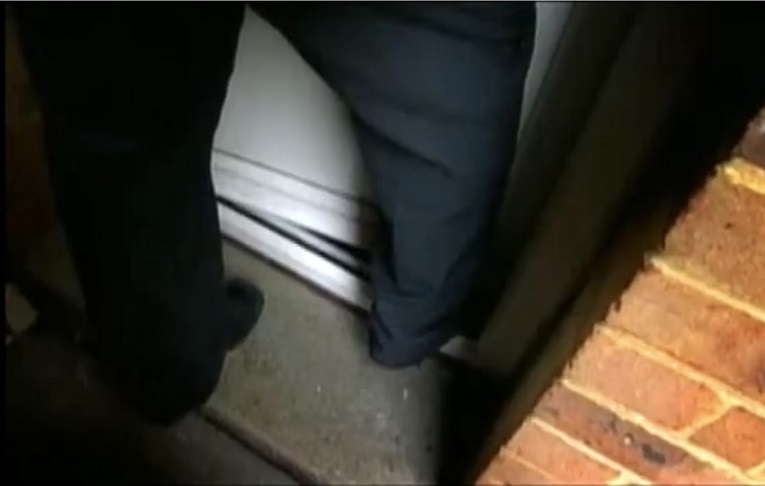Bailiffs jam his boot into your door. The "Threshold Maneuver".
If bailiffs put their foot into your door to stop you closing it, everything that follows is invalid.

Paragraph 24(2) of Schedule 12 of the Tribunals Courts and Enforcement Act 2007 states;
A power to use force does not include power to use force against persons, except to the extent that regulations provide that it does.
This attracts a liability under Paragraph 66(1) of Schedule 12 because it booting a door is a breach of Paragraph 24(2) of that Schedule which states;
66(1)This paragraph applies where an enforcement agent—
(a)breaches a provision of this Schedule, or(b)acts under an enforcement power under a writ, warrant, liability order or other instrument that is defective.
(2)The breach or defect does not make the enforcement agent, or a person he is acting for, a trespasser.
(3)But the debtor may bring proceedings under this paragraph.
(4)Subject to rules of court, the proceedings may be brought—
(a)in the High Court, in relation to an enforcement power under a writ of the High Court;
(b)in a county court, in relation to an enforcement power under a warrant issued by a county court;
(c)in any other case, in the High Court or a county court.
(5)In the proceedings the court may—
(a)order goods to be returned to the debtor;
(b)order the enforcement agent or a related party to pay damages in respect of loss suffered by the debtor as a result of the breach or of anything done under the defective instrument.
A bailiff places his boot against the door before the debtor opens it, and their body weight does the rest. Once their boot is across the threshold, many bailiffs think they have achieved peaceful entry and now have the right to force entry.
It is not legal, because 'peaceful entry' cannot be gained without the consent of the householder. Therefore, the bailiff is there unlawfully and you can treat him as a trespasser. Curlewis v Laurie [1848] or Vaughan v McKenzie [1963] 3 All ER 1154 or Rai & Rai v Birmingham City Council [1993].
In the case of Vaughan v McKenzie [1963] 3 All ER 1154 if the debtor strikes the bailiff after making a forced entry, the debtor is not guilty of assault because the bailiff was there illegally.
In 1993, the case of Rai & Rai v Birmingham City Council [1993] ruled that any seizure of goods made following entry using the boot-in-door Threshold Maneuver is illegal.
Nonetheless the policy continued until 2008 for bailiffs to prevent you closing your door on them by jamming their boot into the aperture of your door to prevent you from closing it to the bailiff.
This was called the Threshold Maneuver because the threshold is the boundary between the inside and outside of you property and bailiffs believed that by crossing the threshold is peaceful entry.
That was until a threshold maneuver involving a Drakes Group (now Marston Holdings) bailiff went disastrously wrong during a 06.15am visit on a woman who was injured when her bare foot was broken at the 5th metatarsal by the bailiffs boot forcing open the door on her.
This resulted in an expensive personal injury claim and the bailiff's liability insurers discontinued providing cover for bailiffs using the threshold maneuver.
If you bring a claim, include a sworn statement proving the bailiff jammed his boot into your door to prevent you closing it.
Here is how to bring the proceedings
Council Tax
If the bailiff is collecting council tax under a liability order, he does not have a power to enter premises. He only has authority to take control of goods.